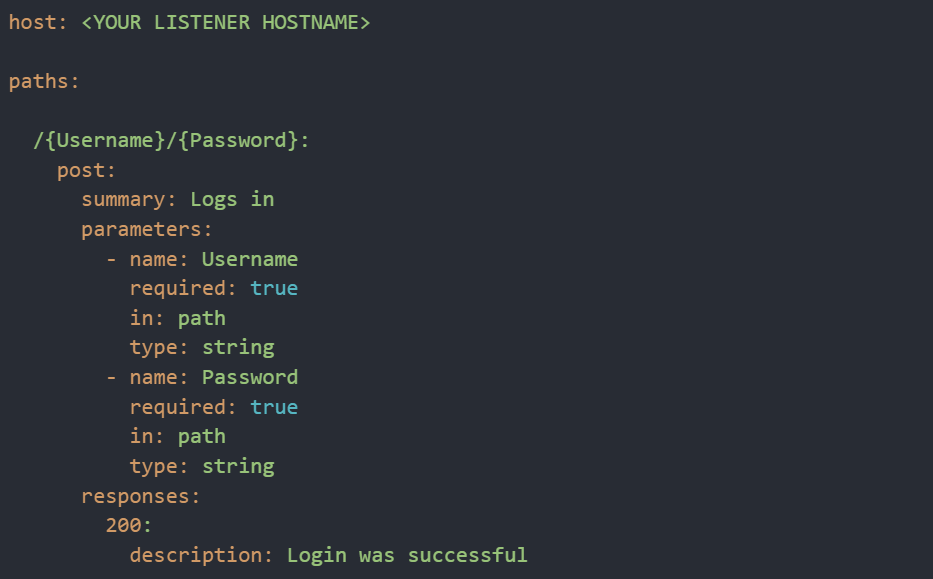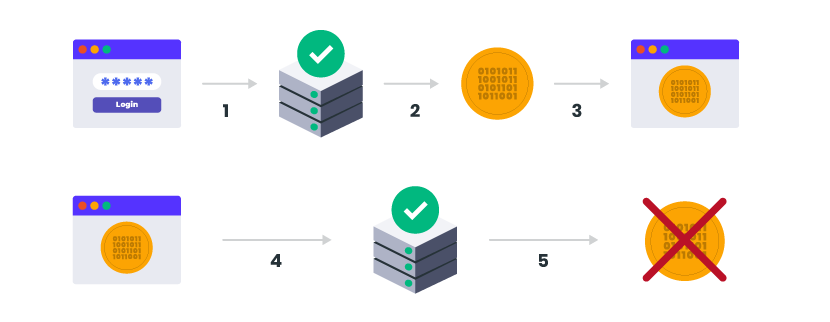
Is Your API Secure? Top 5 Vulnerabilities Developers Miss
Is Your API Secure? Top 5 Vulnerabilities Developers Miss
 Common API attack vectors
Common API attack vectors
Modern APIs are the backbone of digital services, but they're also prime targets for attackers. Let's examine the top 5 API vulnerabilities from OWASP's Top 10 list that developers often overlook.
1. Broken Object Level Authorization (BOLA)
BOLA (Broken Object Level Authorization) is a common API security vulnerability where an attacker can manipulate object identifiers (like user IDs) to gain unauthorized access to other users' data. It is one of the most critical security risks in modern web applications and APIs, often listed in the OWASP API Security Top 10 (ranked #1 in 2019 and 2023).
Example Attack:
Let's say a banking API provides an endpoint:
GET accounts/12345/financial_info
A legitimate user with account ID 12345 can retrieve their account details. However, if the API does not enforce proper authorization, an attacker can change the ID to another user's account:
GET accounts/67890/financial_info
If the API does not verify that the requesting user actually owns account 67890, the attacker can access someone else’s sensitive information.

Prevention:
- Implement resource-level access checks
- Use UUIDs instead of sequential IDs
- Validate ownership in backend logic
- Perform Security Testing (Pentesting, API Scanners)
2. Injection Attacks
Injection attacks occur when an attacker sends malicious input into an API, which is then improperly executed, leading to data leaks, unauthorized access, or system compromise. These attacks exploit weak input validation and unsafe data handling.
Common Injection Attacks:
- SQL Injection (SQLi) – Injects SQL queries to manipulate databases.
- NoSQL Injection – Exploits weak query filtering in NoSQL databases.
- Command Injection – Executes arbitrary system commands via API inputs.
- LDAP Injection – Alters LDAP queries to bypass authentication.
- XML Injection – Manipulates XML payloads to exploit API parsers.
SQL Injection
Vulnerable Code:
app.get('/users', (req, res) => {
db.query(`SELECT * FROM users WHERE name = '${req.query.name}'`);
});
If a user inputs:
' OR '1'='1
It could return all users in the database.
Secure Fix (Using Prepared Statements):
app.get('/users', (req, res) => {
db.query('SELECT * FROM users WHERE name = ?', [req.query.name]);
});
NoSQL Injection
Vulnerable Code:
app.get('/users', (req, res) => {
db.users.find({ "username": req.query.username });
});
{ "username": { "$ne": null } }
This might return all users in the database.
Secure Fix (Input Validation):
const sanitize = require('mongo-sanitize');
app.get('/users', (req, res) => {
db.users.find({ "username": sanitize(req.query.username) });
});
Command Injection
Vulnerable Code:
const { exec } = require('child_process');
app.get('/ping', (req, res) => {
exec(`ping ${req.query.host}`, (err, stdout) => res.send(stdout));
});
If a user enters:
example.com && rm -rf /
It could execute system commands!
Secure Fix (Avoid Direct Execution):
const { execFile } = require('child_process');
app.get('/ping', (req, res) => {
execFile('ping', [req.query.host], (err, stdout) => res.send(stdout));
});
LDAP Injection
Vulnerable Code:
app.get('/login', (req, res) => {
const query = `(uid=${req.query.username})`;
ldapClient.search(query);
});
If a user inputs:
*)(password=*)
It could authenticate anyone!
Secure Fix (Use Parameterized Queries):
const query = '(uid=?);';
ldapClient.search(query, [req.query.username]);
3. Security Misconfigurations
Security misconfigurations are one of the most common vulnerabilities in APIs. They occur when APIs or their environments are not securely set up, leaving sensitive data exposed or allowing unauthorized access.
Common pitfalls include:
- Unnecessary HTTP methods enabled – APIs often leave HTTP methods like PUT, DELETE accessible without proper authorization, potentially allowing attackers to modify or delete resources.
- Improper CORS configurations – If CORS (Cross-Origin Resource Sharing) headers are not properly configured, it can allow malicious sites to make unauthorized API requests.
- Exposed debug endpoints – Debug or development endpoints, like Swagger UI or Postman collections, often contain sensitive information or expose the backend to attacks when left active in production environments.

Exposed Swagger UI with production credentials
Impact of Security Misconfigurations:
- Data Exposure – Misconfigured CORS or debug endpoints can expose sensitive data like API keys, credentials, or database information.
- Unauthorized Access – Improper access controls or HTTP methods can allow attackers to bypass authorization and gain access to restricted resources.
- System Compromise – Exposing debug tools can give attackers valuable insights into the internal workings of the application, leading to exploits and attacks.
Best Practices to Avoid Security Misconfigurations:
-Limit HTTP Methods: Only enable HTTP methods required for your application. Disable methods like PUT and DELETE if they aren’t necessary.
-Proper CORS Configuration: Use allow-lists to specify trusted domains and restrict access from untrusted origins.
-Disable Debug Endpoints in Production: Ensure Swagger UI, Postman collections, or any debugging tools are disabled in production.
-Use Security Headers: Implement security-related HTTP headers like Strict-Transport-Security (HSTS), Content Security Policy (CSP), and X-Content-Type-Options to secure your API.
-Automated Security Scanning: Use tools like OWASP ZAP or Burp Suite to automate the detection of misconfigurations and other security issues.
By ensuring your API is properly configured, you can minimize the attack surface and protect against common vulnerabilities. 🚀
4. Excessive Data Exposure
Excessive data exposure occurs when APIs return full data objects without filtering, leading to unintended information leaks.
Bad Practice:
{
"user": {
"email": "user@example.com",
"password_hash": "...",
"ssn": "123-45-6789"
}
}
Sensitive information, such as passwords and social security numbers, should never be included in API responses.
Secure Approach:
{
"user": {
"email": "user@example.com",
"public_id": "u-12345"
}
}
In this example, the password_hash and ssn are removed, reducing the risk Only return necessary data and avoid exposing sensitive information like passwords, SSNs, or personal identifiers.
5. Broken Authentication
Broken authentication vulnerabilities occur when APIs fail to properly authenticate or validate users, leading to unauthorized access. Common issues include:
- Weak JWT validation – Not verifying the authenticity of JWT tokens.
- Missing token expiration – Tokens that do not expire, allowing indefinite access.
- Insecure key storage – Storing keys or secrets in unsafe locations.
Dangerous Practice:
# Dangerous practice
jwt.decode(token, verify=False)
This practice skips token validation, leaving the application vulnerable to token tampering.
Secure Approach:
Always validate JWT tokens with a secret key.
Use token expiration and refresh tokens for better session management.
Store secrets securely (e.g., environment variables or secret management tools).
 Secure token validation process
Secure token validation process
API Security Best Practices
To safeguard your API, follow these essential security best practices:
-Implement Rate Limiting: Limit the number of requests a user can make to your API in a given time period to prevent abuse and denial-of-service (DoS) attacks.
-Use Strict Schema Validation: Validate all incoming data against a predefined schema to avoid malicious inputs that could lead to vulnerabilities like injection attacks.
-Encrypt Sensitive Data in Transit and at Rest: Always encrypt sensitive information using TLS (for data in transit) and secure storage mechanisms (for data at rest) to protect against data breaches.
-Regularly Audit API Endpoints: Conduct regular security audits and penetration tests on API endpoints to identify vulnerabilities and ensure they are secure.
# Example rate limiting configuration
rate_limit:
enabled: true
requests: 100
window: 60 # seconds
headers: true
Critical Note: Always test APIs with tools like OWASP ZAP and Postman before production deployment.
Recommended Resources
Conclusion
API security requires continuous vigilance. By addressing these top vulnerabilities and implementing robust security controls, developers can create APIs that are both functional and secure.
Thanks For Reading 💝
Comments(0)
Add to the discussion with mindful and relevant comments
No comments yet. Be the first to start the conversation!